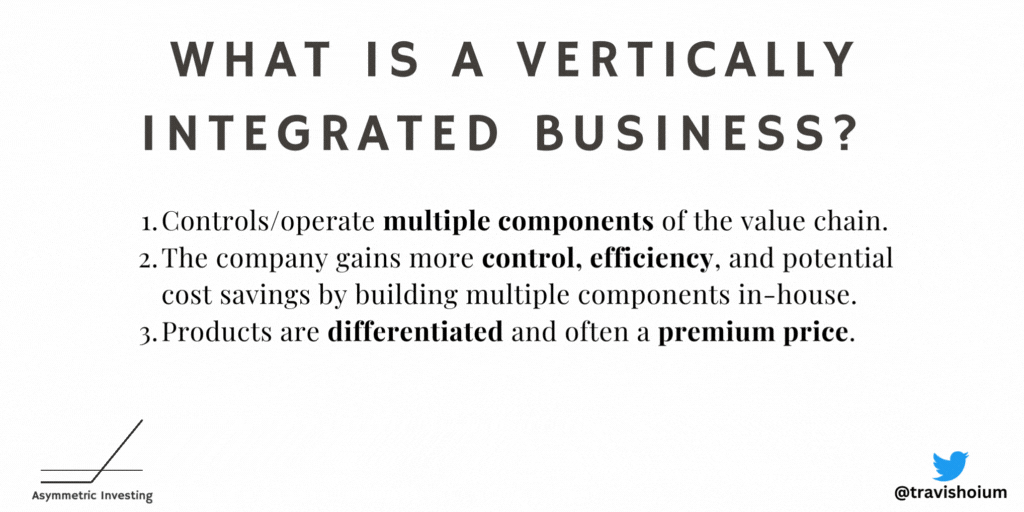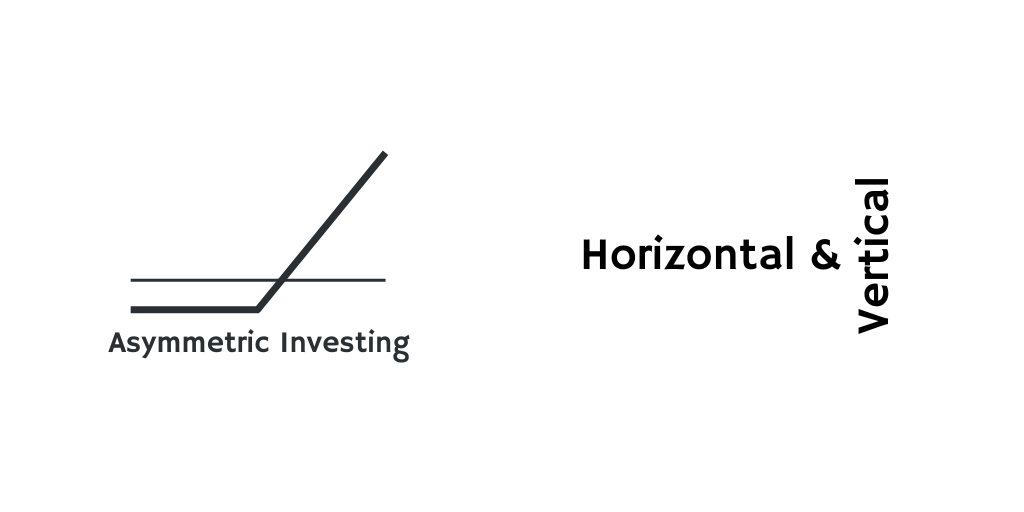There’s no right or wrong way to build an amazing business, but there are some strategy frameworks that I want to cover and regularly refer back to on Asymmetric Investing.
One I have already touched on is the difference between vertical and horizontal businesses.
Vertical Integration
In its simplest form, vertical integration means you make every part of the value chain. You’re not just cooking the pizza, you’re making the dough, growing veggies, processing meat, and mixing your own sauce.
No company can do everything alone, but a company building vertically will make everything of value in-house, if it can.
An example of a vertically integrated company is Apple, who designs its own chips, designs the operating system, designs hardware, and even owns the retail channel. While Apple controls the design, it outsources most of its manufacturing to companies like Foxconn and Taiwan Semiconductor who have expertise and scale in their respective businesses.
But note that Apple makes far more profit than either of these suppliers, showing it has commoditized its suppliers while differentiating through its points of vertical integration.

Horizontal Businesses
A horizontal business model aims to serve multiple suppliers and customers with the same product.
Successful horizontal companies find valuable niches and perform their core functions better than any other substitute.
Examples of successful horizontal businesses are Google (search), Taiwan Semiconductor (fabs), Microsoft (enterprise software), and Spotify (audio streaming). These companies specialize in one segment of the value chain and aim to be the preferred supplier for customers and a company suppliers HAVE to work with whether they like it or not.

Through this powerful position in the value chain, many horizontal companies can extract most of the value in the supply chain overall.
Modularization
Another term I will use regularly is modularization. This simply means a component that can be replaced by another component. Solar panels are modular because one can be replaced with another, as are computer chips, car parts, and thermostats.
Vertical businesses aim to modularize as many parts of the value chain as possible because they will then have multiple suppliers to chose from, giving the vertical company flexibility and pricing power. Horizontal companies often start as modular companies that differentiate themselves somehow, creating a sustainable differentiation that causes most customers to choose their modular component over others.
Vertical and Horizontal Examples
Within the Asymmetric Universe there are some great examples of vertical and horizontal companies.
Spotify is a clearly horizontal company, aggregating content from multiple record labels and thousands of podcast creators onto the app. Then streaming is distributed to every possible device from iPhones to cars and home audio equipment.
Cruise is vertically integrated, developing its own technology, building vehicles, deploying the fleet, and building the customer touch point.
My update on Peloton last week covered how this is a company that went from being vertical to being horizontal over the last few years.
Sony is vertically integrated in video games, but has horizontal businesses in media, music, cameras, and other technology products.
Dropbox is vertically integrated from cloud hardware to its apps, but then access to services can be done on almost any device.
Companies mix and match where they integrate and where they go horizontal. Understanding how these strategies add value will put you a step ahead of most investors and add to a framework for analyzing companies.
Disclaimer: Travis Hoium owns shares of all of the stocks mentioned. Asymmetric Investingprovides analysis and DOES NOT provide individual financial advice. All content is for informational purposes only. Asymmetric Investing is not a registered investment, legal, or tax advisor or a broker/dealer. Trading any asset involves risk and could result in significant capital losses. Please, do your own research before acquiring stocks.

